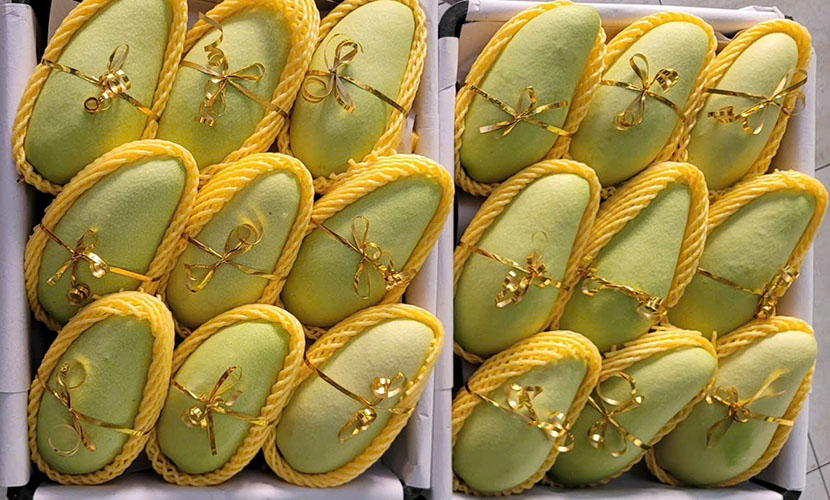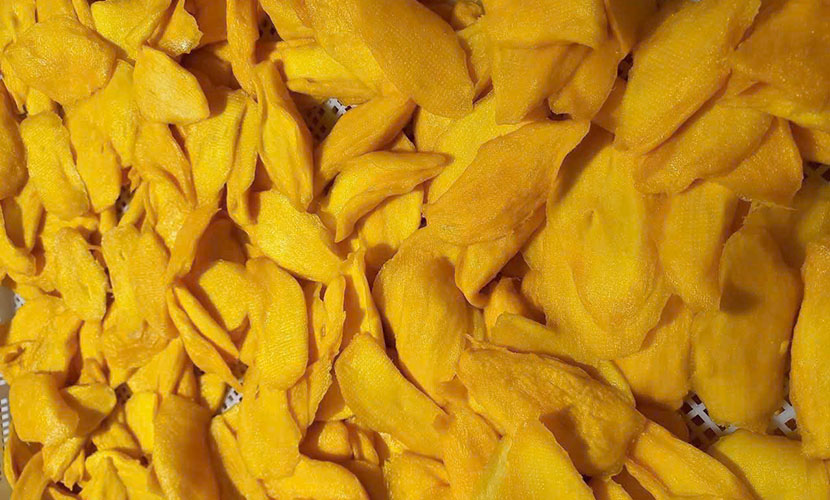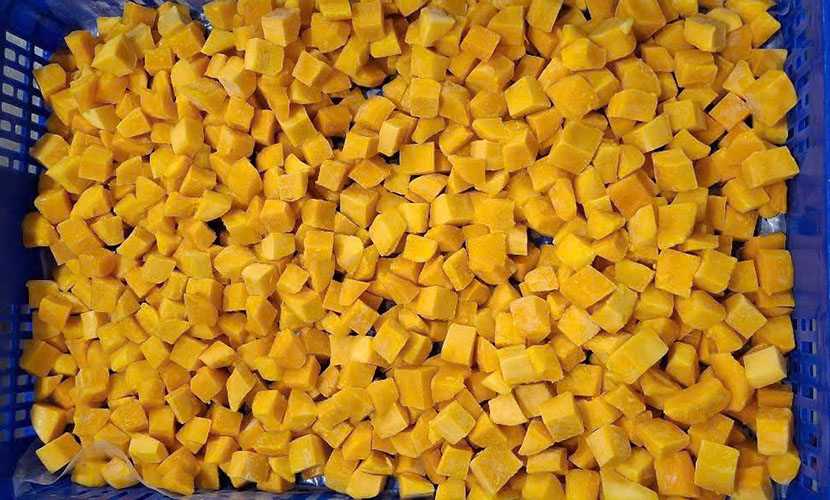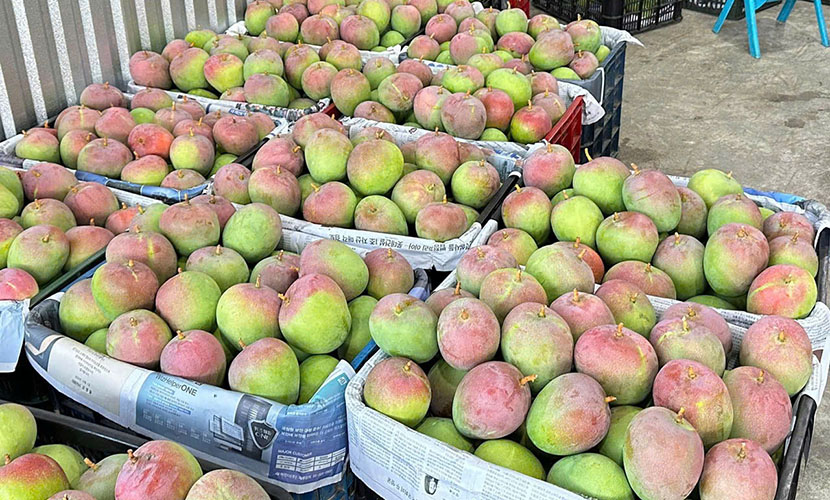
Thanks to their advantages in quality, price, and flexible seasonality, Vietnam’s mangoes are becoming the top choice for Chinese consumers. In Chinese market, Vietnamese mangoes are dominating rivals like Thailand, Peru, and Australia. Famous mango varieties such as Cat Hoa Loc and Cat Chu are now the “stars” in the billion-population market.
In the first quarter of the year, Vietnam earned $88.5 million from fresh mango exports. It showed a 16% increase compared to the same period last year. Exported processed mango products brought in nearly $30 million, up 7.2% year-on-year. Among all fruit export revenues, mangoes ranked fourth, after dragon fruit, durian, and bananas.

Vietnam’s mangoes
Notably, in quarter 1, we exported nearly 40,700 tons of Vietnam’s mangoes to China, earning $28 million. These figures showed an significant growth in both volume and value.
In the first three month of this year, China spent $29 million importing mangoes from six countries. The import value was 21 times more than the same period last year. Remarkably, while imports from traditional markets such as Thailand, the Philippines, and Peru sharply declined, Vietnam emerged with exceptional growth.
Currently, Vietnamese mangoes account for 97% of China’s imported mango market share. They are far surpassing major competitors like Thailand, Cambodia, Australia, and Peru. Thailand used to a leading supplier of mangoes to China, has now dropped to fifth place. The export value of Thai mangoes to China reached only $65,000, a 70% decrease year-on-year.

Vietnam’s dried mango
According to Mr. Nguyen, Secretary General of the Vietnam Fruit and Vegetable Association, this remarkable success of Vietnam’s mangoes is not due to luck. However, it is the result from a series of strategic advantages.
First, Vietnam’s geographical proximity to China reduces transportation time and logistics costs. In addition, it ensures freshness, which is an essential factor for tropical fruits.
Second, competitive pricing is a major advantage. Prices of Vietnamese mango is at an average of $700 per ton. They are comparable to Cambodia and much lower than mangoes from Thailand, Peru, or Australia, which range from $6,000 to $11,000 per ton. This makes Vietnamese mangoes more accessible to Chinese importers and retailers.

Vietnam’s frozen sliced mango
Third, Vietnam benefits from off-season mango supply. From September to March, when China’s domestic mango supply drops, Vietnam can fill the gap with stable, high-quality mango. This is a “golden time” when Vietnamese farmers can sell top-grade mangoes for up to 100,000 VND/kg.
Beyond price and logistics, Vietnamese mangoes have won over consumers with their exceptional quality. Famous varieties like Cat Hoa Loc and Cat Chu are highly favored in China for their naturally sweet taste, fragrance, and consistent ripeness. These traits match Chinese consumer preferences—not only for fresh eating but also for juices, jams, and snacks.
According to the Vietnam Fruit and Vegetable Association, nearly 2,000 hectares of Vietnam’s mangoes in the Mekong Delta have achieved Vietgap and Globalgap certification. They can meet food safety, traceability, and phytosanitary standards for demanding markets like China, Japan, the US, and South Korea.

Vietnam’s fresh mangoes
China’s mango consumption has surged in recent years. This surge was driven by a growing preference for tropical fruits and the inability of domestic supply to meet year-round demand. Therefore, imported mangoes, especially from Vietnam, have become an essential solution to balance supply and demand.
However, according to produce industry experts, from May onwards, China enters its own mango harvest season. Therefore, Vietnamese mango exports may decline significantly during this period.
Beyond China, Vietnam’s mangoes are now present in over 30 countries. They include demanding markets such as the United States, Japan, South Korea, and the Netherlands. This is strong evidence of the potential and competitiveness of Vietnamese mangoes on the global agricultural map. If the industry continues to maintain quality and expand certified growing areas, Vietnamese mangoes could go even further.
Vietnamese source: https://tienphong.vn/xoai-viet-nam-dang-lam-mua-lam-gio-o-trung-quoc-post1745944.tpo
